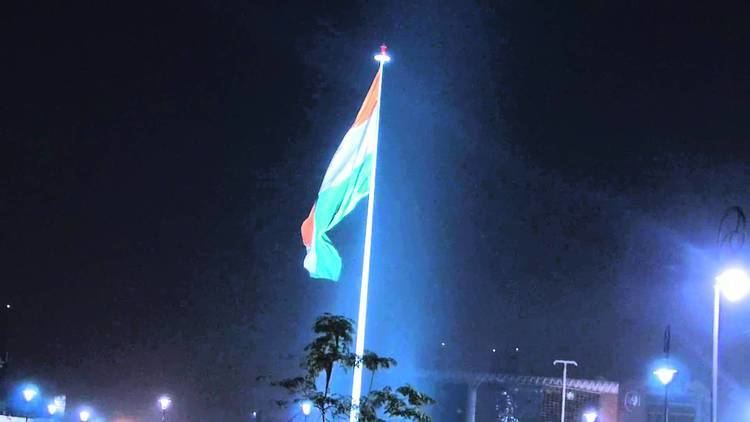Opened 7 March 2014 | ||
 | ||
Similar Central Park, Jantar Mantar - New Delhi, Gurudwara Bangla Sahib, India Gate, The Red Fort | ||
Flag of india at central park connaught place
Tiranga, the national flag of India hoisted at Central Park, Connaught Place, New Delhi is the second largest national flags of India. On 7 March 2014, the flag was hoisted for the first time, at the time being the largest Indian flag in the world. This title was later claimed by the flag pole of Sanjeevaiah park on the banks of Hussain Sagar in Hyderabad which was hoisted on 2 June 2016.
Contents
Location
The flag is located at the centre of the Central Park, encircled by Inner Circle Rd, which is listed as a heritage building of Connaught Place which is regarded as the heart of Delhi. The flag pole has been designed keeping in mind the geometry of Connaught Place.
Structure
The flag measures 90 by 60 feet (27 by 18 m). The pole on which it is hoisted measures 207 feet (63 m). The flag weighs around 37 kilograms. The flag is made of knitted polyster fabric called ‘deneir polyester’ manufactured in Mumbai by ‘The Flag Shop’. The Ashoka Chakra on the flag has been printed by using a specialised printing process.
The flag is illuminated at night with the usage of eight 2,000 Watt lights.The Flag has blowers. A special permission for this has been taken for this purpose from the Home Ministry Flag is guarded by guards and CCTV cameras have been installed around it. The flag is also replaced if torn or dirty.
History
The Flag Foundation of India had sent its proposal of installing the national tricolour to the NDMC. The proposal was sent by NDMC to the Delhi Urban Art Commission (DUAC). The DUAC approved the proposal after scrutinising the plan. It was ensured that the proposed structure did not lead to any pollution or traffic mess.
The first Indian to hoist the tricolor at Central lawns of Connaught Circus in pre-independent India was the veteran freedom fighter Mir Mushtaq Ahmad who would raise the flag and demand the end of British rule in what was then considered the heart of British imperialism in India.
